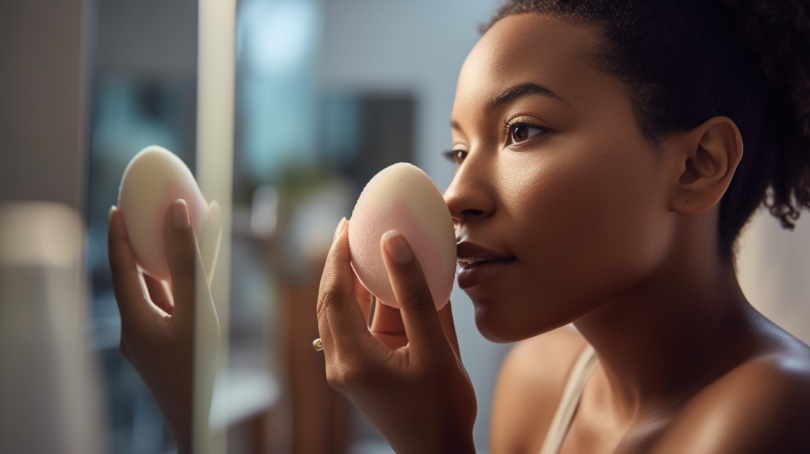Discover the Variety of Hair Straighteners: A Comprehensive Guide
Hair straighteners are a staple tool for anyone who wants to achieve sleek, smooth, and straight hair. They come in various types and models, each with its unique features and benefits. Choosing the right one can be overwhelming, especially if you’re not familiar with the different types of hair straighteners available on the market.
In this comprehensive guide, we’ll explore the various types of hair straighteners, their benefits and challenges, and practical tips on how to use them effectively. Whether you’re a beginner or an advanced user looking for professional-grade hair straighteners, this guide has got you covered.
Types of Hair Straighteners
There are several types of hair straighteners available on the market. Each type uses different materials and technologies to achieve a particular result. Here are some of the most common types:
Flat Iron
The flat iron is the most popular type of hair straightener. It is versatile and can be used on all hair types. Flat irons come in different sizes, ranging from 0.5 inches to 2 inches. The plates can be made from various materials such as ceramic, titanium, or tourmaline.
Ceramic plates distribute heat evenly across the hair shafts, reducing damage caused by hot spots. Titanium plates heat up quickly and provide high heat retention for faster styling times. Tourmaline plates emit negative ions that neutralize static electricity and reduce frizz.
Steam Iron
The steam iron is a relatively new type of hair straightener that uses steam to straighten hair. It works by releasing steam through small vents on the plates while styling your hair.
The steam helps to hydrate your hair while sealing in moisture for a smoother finish. Steam irons are ideal for people with dry or damaged hair since they can help to prevent further damage caused by excessive heat.
Brush Straightener
The brush straightener is a combination of a brush and a flat iron. It uses a heated brush to straighten your hair, making it ideal for people with thick or curly hair. The brush straightener is easy to use and can help you achieve a sleek, smooth finish in no time.
Professional Straightener
The professional straightener is designed for salon use and is ideal for people with thick or curly hair. It uses advanced technologies such as ionic technology and infrared heat to provide optimal styling results.
The professional straightener is usually more expensive than other types of hair straighteners, but it’s worth the investment if you’re looking for salon-quality results at home.
Benefits and Challenges of Using Hair Straighteners
Hair straighteners offer several benefits, including:
- Sleek, smooth, and straight hair
- Versatility (can be used on all hair types)
- Quick styling times
- Improved manageability
However, there are also some challenges associated with using hair straighteners, including:
- Dryness and damage to the hair
- Burns or injuries from the hot plates
- Static electricity and frizz
- Fading color-treated hair faster than usual
To minimize these challenges, it’s essential to choose the right type of hair straightener for your hair type and use it correctly. Here are some practical tips:
Tips for Using Hair Straighteners
Choose the Right Type of Hair Straightener
Choosing the right type of hair straightener is crucial for achieving optimal results. Consider your hair type, length, and texture when choosing a hair straightener. If you have thick or curly hair, choose a brush straightener or professional straightener. If you have fine or thin hair, consider using a flat iron with ceramic plates.
Protect Your Hair
Before using a hair straightener, protect your hair by applying a heat protectant spray or serum. This will help to minimize damage caused by excessive heat and reduce the risk of dryness and breakage.
Use the Right Temperature
Using the right temperature is essential for achieving optimal results while minimizing damage to your hair. Follow the manufacturer’s instructions and use a lower temperature setting if you have fine or thin hair.
Section Your Hair
Sectioning your hair can help you achieve better results while minimizing damage to your hair. Use clips to separate your hair into sections before styling it with a hair straightener.
Avoid Overuse
Using a hair straightener too frequently can cause dryness and damage to your hair over time. Avoid using it every day and give your hair time to recover between uses.
In Conclusion
Hair straighteners are an excellent tool for achieving sleek, smooth, and straight hair. There are several types of hair straighteners available on the market, each with its unique features and benefits. Choosing the right one can be overwhelming, but with this comprehensive guide, you now have all the information you need to make an informed decision.
To achieve optimal results while minimizing damage to your hair, it’s essential to choose the right type of hair straightener for your hair type and use it correctly. Follow the practical tips outlined in this guide, and you’ll be on your way to achieving salon-quality results at home.




